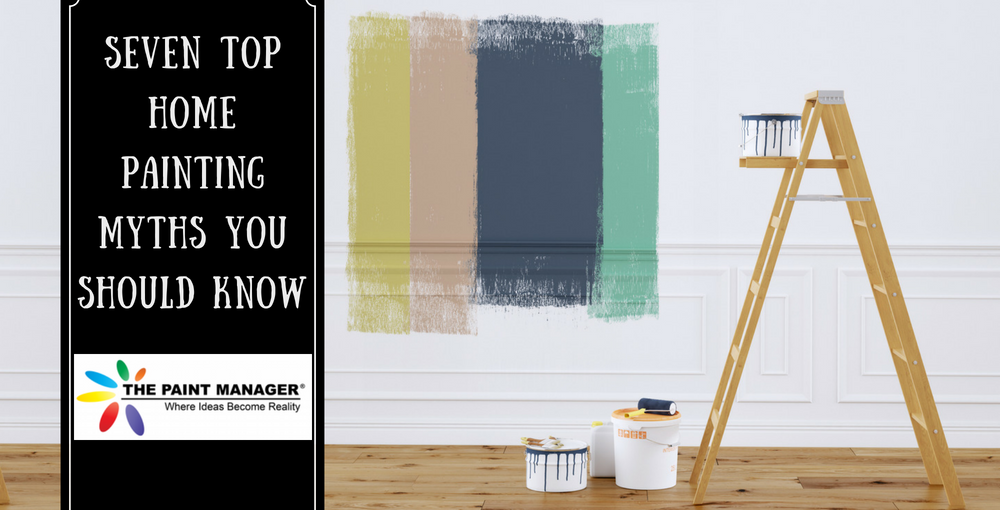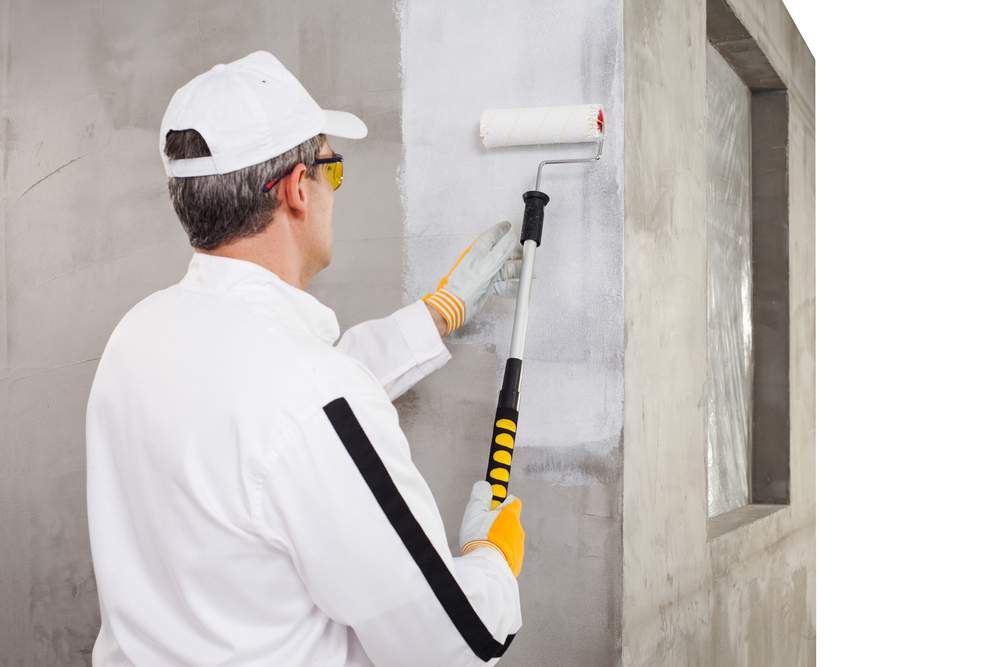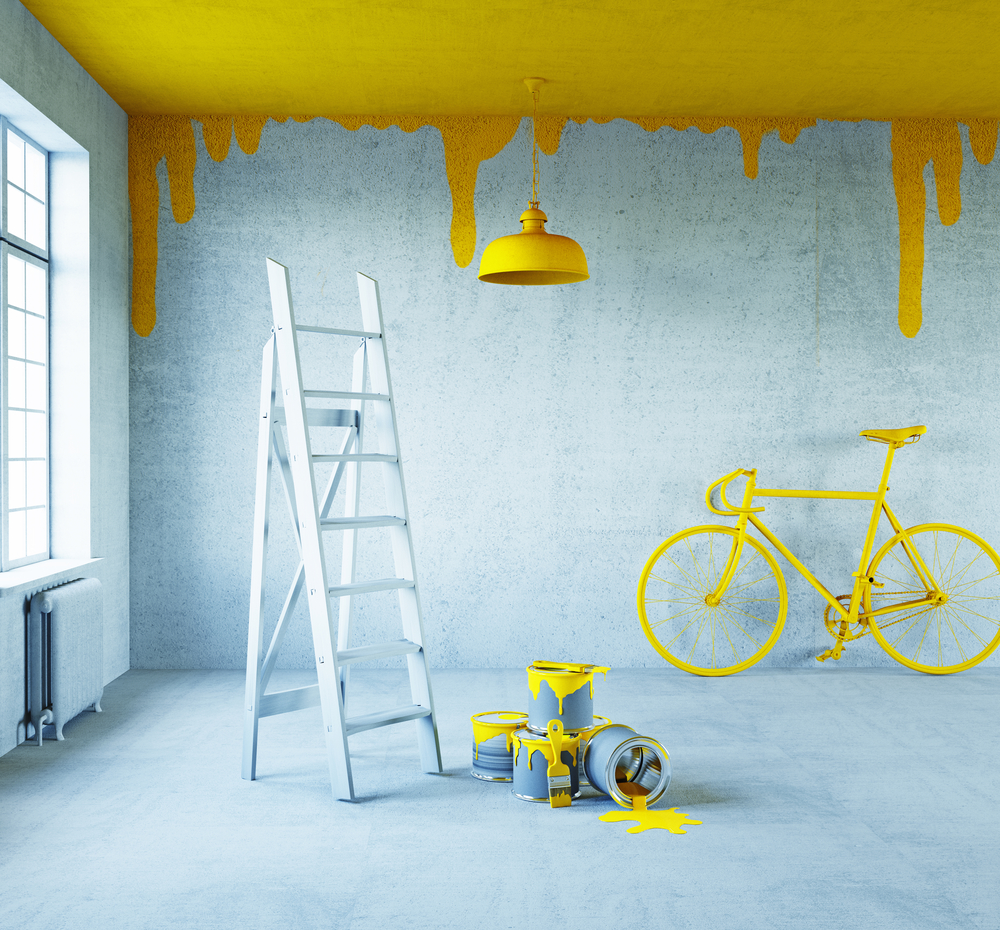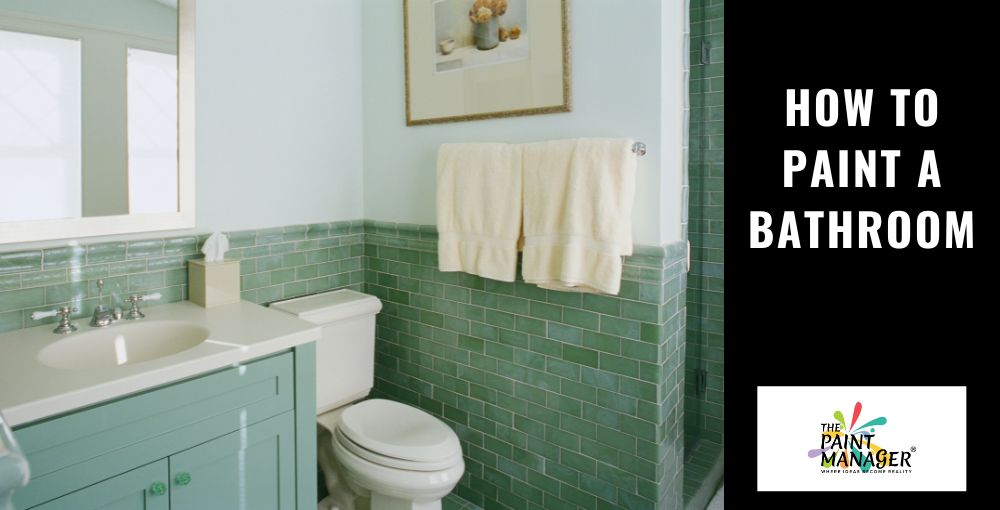
How to Paint a Bathroom
Be it the primary bathroom, guest bathroom or powder room, a fresh coat of paint can give an immediate visual lift that updates its look and makes it more inviting. Whatever its size, however, a bathroom could be deceiving in sizing up. Because it’s a small space – even for a typical primary bath – homeowners tend to underestimate the complexity of doing it themselves, and can quickly find themselves in over their head.
You may at first be looking at relatively small areas of wall surface, but will soon encounter such obstacles as the vanity, toilet, light fixtures and shower tile. As home improvement expert Lee Wallender writes for The Spruce, “Bathrooms are small and full of water from various sources, and they receive lots of heavy use. For beautiful results, it is important to pay special attention to all aspects of bathroom painting, from surface preparation and color choices to the process of painting and final touches.”
For what happens if you don’t, our blog post – “Common Interior Painting Mistakes to Avoid” – describes the consequences of mistakes in paint selection, prep work and application techniques.
Choosing the Right Type of Paint for Your Bathroom
Because bathrooms are regularly exposed to a high amount of moisture, choosing the right type of paint is important. According to Forbes Home, the best type of paint for bathrooms is a satin, semi-gloss, or glossy finish with a mildew-resistant additive.
“Humidity is a threat to the look and performance of paint. Moisture, like steam from your shower, can seep between the wall and coat of paint, creating unwanted texture, bubbling and peeling. Paints with a glossy finish are moisture-resistant because once cured, satin and gloss finishes form a hard coat that blocks out water, allowing it to drip to the floor rather than seep through to the drywall or wood. High-gloss and enamel paints look, feel and act more like glass or a dry-erase board.”
Low-sheen paints – such as flat, matte or eggshell finishes – may be appealing if you’re trying to conceal surface irregularities, but are softer and absorb moisture, encouraging mildew growth. Also, they’re harder to clean. If you prefer the look of these types of finishes, paint technology has come a long way in recent years. There are matte, flat and eggshell bathroom paints made to resist mildew and make cleaning easier. Ask for assistance in the paint department of your local home improvement store. The sales associate will be able to help you find the right paint.
Here is a breakdown of the other types of paint:
Satin – This sits between eggshell and gloss paints. It develops a slight protective coating, making it a little easier to clean than no-sheen paints. Satin is a good choice for the bathroom if you want a softer-than-gloss texture that has many benefits of a gloss finish. It’s great for bathroom walls, ceiling or trim and is relatively easy to clean, but not as easy as semi-gloss or gloss.
Semi-gloss – This is one of the most versatile paint finishes because it is easy to clean and water-resistant, making it a great choice for your bathroom walls and trim – as well as cabinets. However, it does show imperfections in the wall surface.
Glossy and Full-gloss – These paint types offer the most protection from moisture, and are the most durable. Glossy finishes are the easiest to clean, also making them perfect for bathroom cabinets and trim.
In addition to the paint type, consider the paint color for your bathroom. Of course, light-colored or neutral walls will make the space look larger and brighter. Forbes Home points out another advantage: they can optimize the brightness and clarity of your mirror’s reflection because they reflect more light. “In contrast, dark paint colors will absorb more light, resulting in a less vibrant reflection. Warm colors can cast a warm glow, while cooler colors can cast a cooler tone, affecting the reflection that you’ll see in the mirror.” So keep this in mind if you want a flattering light that will give you a healthy, more youthful glow!
Prepping the Bathroom
As with painting any interior room, proper prep work is essential in achieving a professional-looking, durable result. You may not typically think about it, but bathroom walls and even ceilings and baseboards become covered in soap scum, water streaks and built-up residue from hairspray and other personal grooming products. Painting without cleaning can cause the paint to quickly peel off – assuming it will stick to the walls in the first place!
The first step is to thoroughly clean the walls and baseboards with a degreasing detergent. Dengarden recommends a degreasing dish detergent for this task, but if a stronger cleaner is necessary, use trisodium phosphate (TSP). As Wallender writes, TSP “… might be considered a miracle cleaning product because it is so inexpensive, cleans off the gunk, and won’t compromise your paint job.”
Mold and mildew occur on bathroom walls due to high humidity and poor ventilation and/or infrequent cleaning. If this is an issue, you must remove it before painting, or it will quickly grow back. Cleaning the walls with straight vinegar, baking soda, Borax or hydrogen peroxide will kill the spores and prevent regrowth. According to Dengarden, vinegar doesn’t smell great, but it’s non-toxic, and the acidity of vinegar is effective for killing mold on porous drywall.
To remove mold and mildew with vinegar, pour white distilled vinegar into a spray bottle, or a pump sprayer. Spray undiluted vinegar onto the mold and let it penetrate the surface for a couple of hours. After allowing the vinegar to eat into the mold, scrub the drywall with a stiff bristle brush until all of the mold and mildew has washed off. Wear a respirator, or at the very least, a dust mask, to prevent inhalation of mold spores during cleaning. Allow the bathroom to totally dry out with the windows open before applying mold-killing primer and paint.
CAUTION: Never mix vinegar with bleach. Mixing the two together produces poisonous gas.
After the walls, baseboards and ceilings are clean, remove switch and outlet plates, mirrors, bathroom exhaust vent grilles, towel racks and any other items that you can remove relatively easily. Then, cover areas that will not be painted. Tape off the ceiling, trim, bathtub surround and backsplash. Drape drop cloths over the bathroom vanity, sink, mirror and flooring.
Some DIY experts recommend removing the toilet tank to provide easier access to the wall behind the toilet. If you feel confident in doing so, follow these steps:
- Turn off the water supply at the shutoff valve on the wall.
- Flush the toilet to expel all water.
- Remove the tank, using old towels on the floor to catch water spills.
Removing the toilet tank should be a two-person job to prevent dropping it, as the tank is heavy even when empty – so consider the potential for disaster if deciding to do this. Painting behind an intact toilet requires some awkward maneuvering, but is preferable to dealing with a big watery mess, or cracked tank and cracked floor tile – or a back injury!
Use the Right Technique When Painting Your Bathroom
Now you’re ready to paint! Start with the ceiling. If your bathroom is prone to excessive moisture, use a glossier paint such as semi-gloss or satin on the ceiling.
- Prime the walls: Even though it is not necessary, priming your bathroom walls will ensure that your paint adheres to the surface better. It will also minimize the number of top coats required. Don’t forget to apply the primer to the bathroom edges and corners using a paintbrush.
- Cut-in the bathroom ceiling corners: You don’t have to be extremely precise when cutting in paint lines on the walls but for the ceiling, you have to. Fill all the ceiling corners with your paint. If you don’t want to repeatedly climb up and down the step ladder, you can use an extendable paint brush when painting the ceiling.
- Roll the bathroom ceiling: 9-inch rollers that are lint-free are ideal. You can also use lint-free fabric rollers. Use a 1/2-inch roller nap to prevent a heavy stippling texture.
- Paint the trim: After painting the ceiling, start painting the trim. Once you have finished painting the trim, tape it off, and – at last – paint the walls.
- Paint the walls: Tape off the bathroom baseboard using painter’s tape. Cut in the bathroom walls, then roll the walls. We recommend using two coats of paint for better durability and a professional look. To paint the area behind the toilet, use a 4-inch roller. If the gap between the wall and the toilet is too small, use a brush to paint it.
Should You DIY or Call a Professional to Paint Your Bathroom?
As we always say, this is a question only you can answer! If you’ve successfully completed DIY home improvement projects and have the right tools, supplies and protective clothing, painting a bathroom could be in your wheelhouse.
However, if you thought that painting a small bathroom would be easy as pie, a walk in the park or any other simile – and now think differently after reading this blog post – call our professionals at The Paint Manager! We have the experience, skill, equipment and supplies to make sure the job is done correctly and safely!
The Paint Manager has been proudly serving Central Florida homeowners for over 20 years with experienced, dedicated and professional services that include exterior and interior house painting, roof repair and cleaning, drywall repair, popcorn ceiling texture removal, cabinet refinishing and so much more!
Plus, become a member of The Paint Manager to receive a 15% year-‘round member’s discount. Contact us to learn more about our services and membership discount offer. We look forward to meeting you!

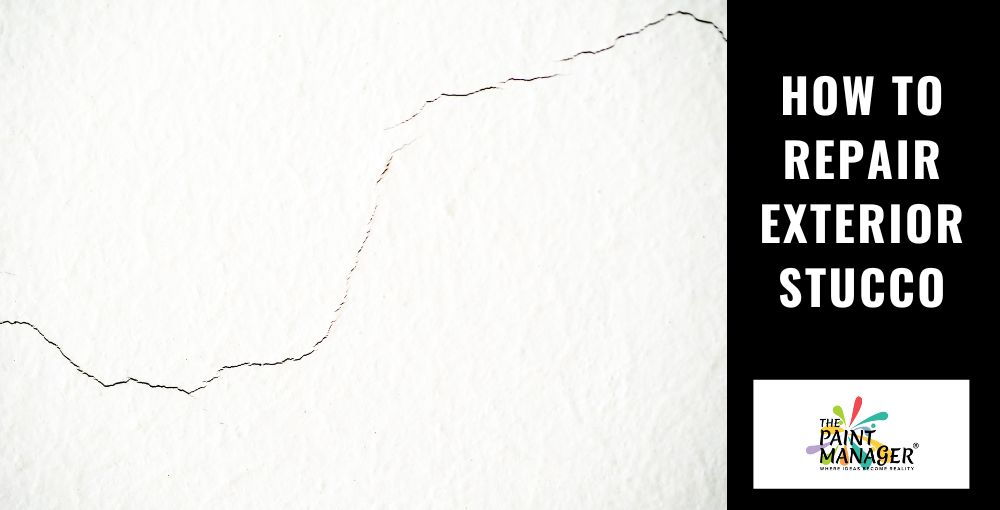

 First up, author
First up, author For those who prefer a more traditional take on warm autumn hues, floral arrangements are a perfect way to set the tone.
For those who prefer a more traditional take on warm autumn hues, floral arrangements are a perfect way to set the tone.